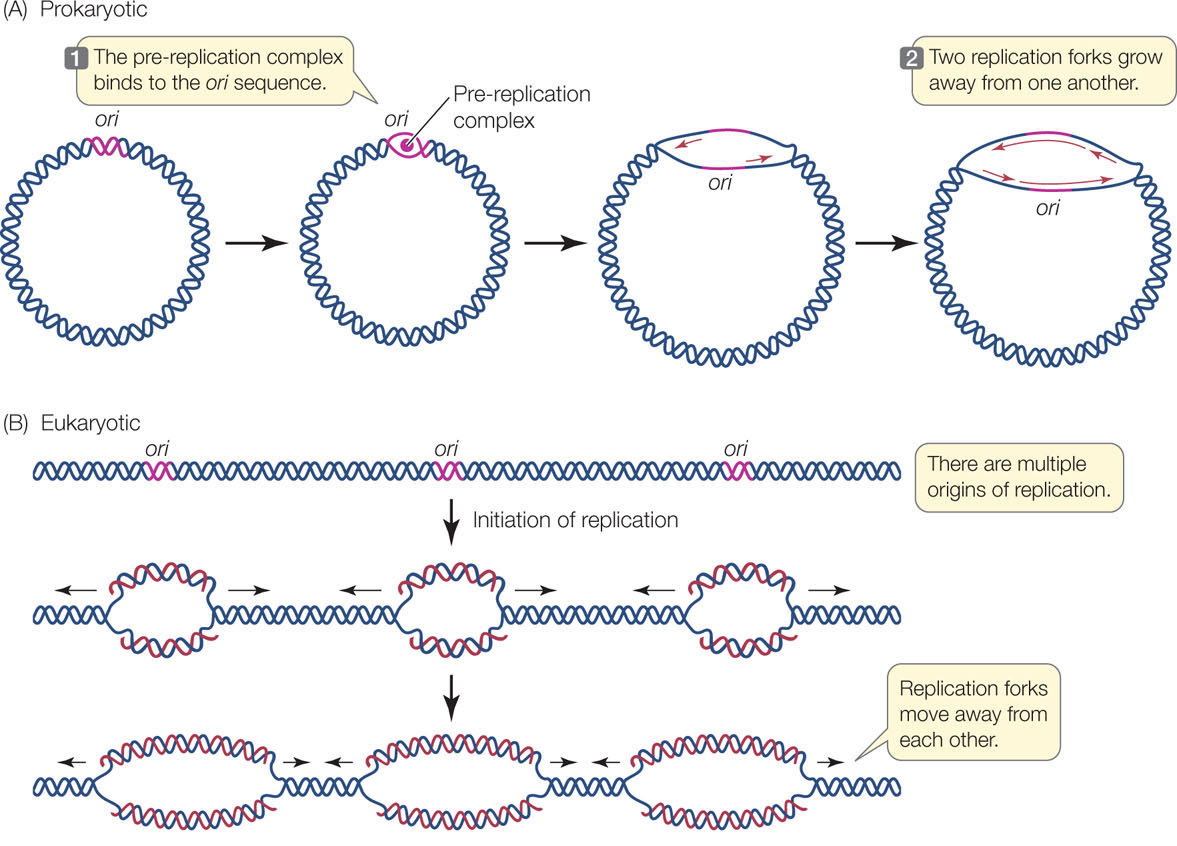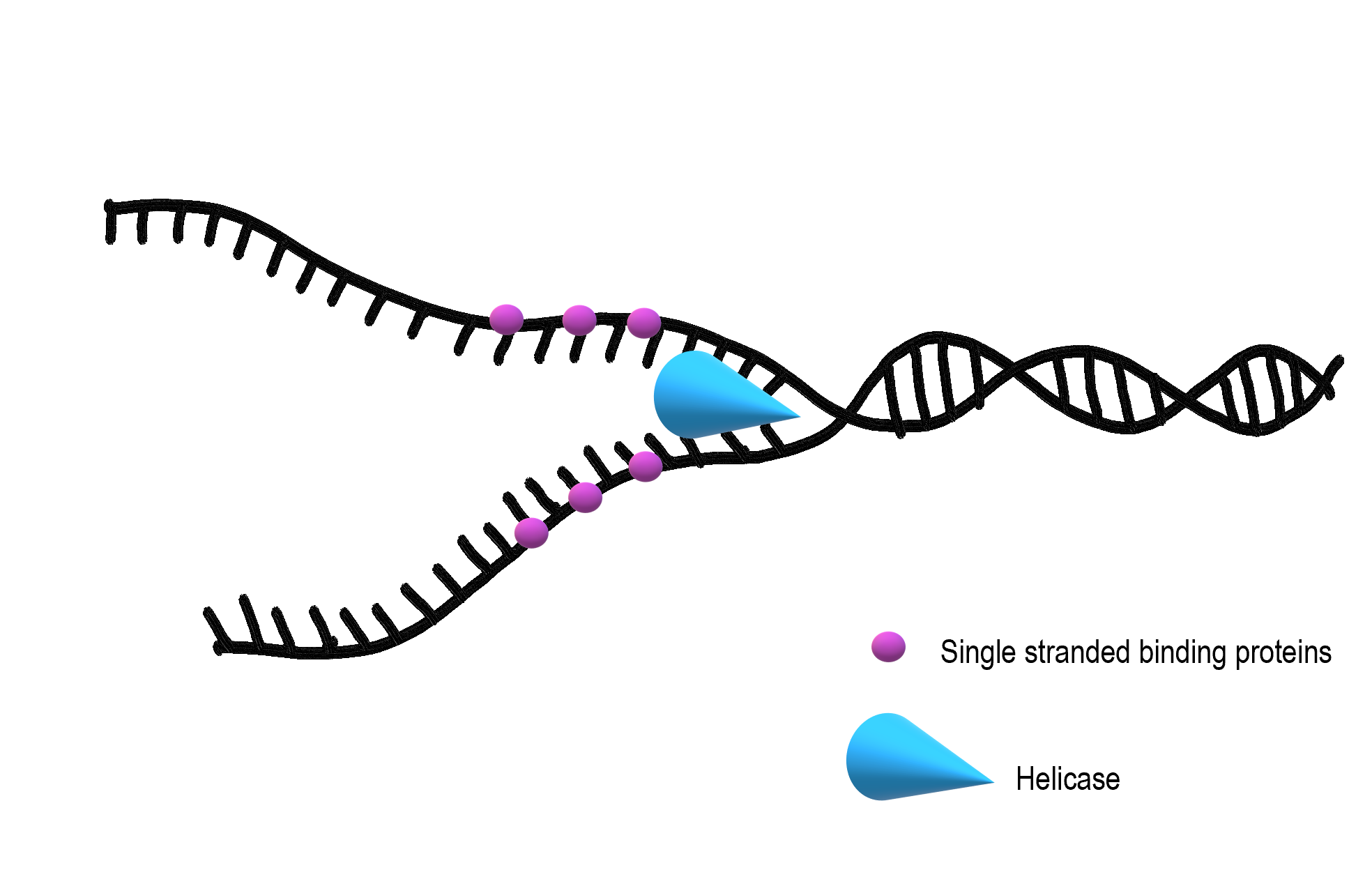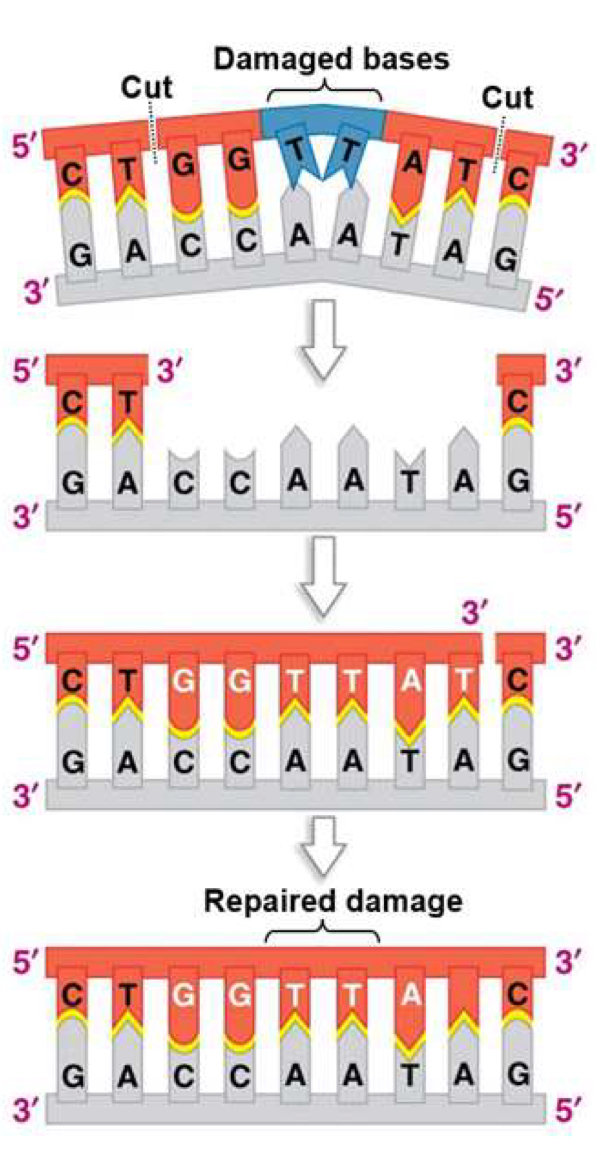Chapter 15 - DNA synthesis and Repair
1/24
There's no tags or description
Looks like no tags are added yet.
Name | Mastery | Learn | Test | Matching | Spaced |
|---|
No study sessions yet.
25 Terms
Hershey-Chase Experiment
Basis:
DNA contains P but not S
Protein contains S but not P
Evidence:
Radioactive DNA is in pellet
Radioactive protein is in solution
What is replication carried out by
DNA polymerase (enzyme)
Makes a polymer of DNA
Catalyzes DNA synthesis
DNA polymerase limitations
DNA polymerase proceed ONLY 5’ → 3’
Must have free 3’-OH to attach incoming nucleotide
Must have second strand to use a template
DNA polymerase in bacteria
Labeled with Roman numbers
DNA Pol. I-V
Carry out replication, repair, or both
Where does the energy for synthesis come from?
dNTPS- Deoxyribonucleoside triphosphate
each nucleotide being added brings its own energy

Origin of replication for bacteria? Eukaryotes?
Bacteria- one origin, one replication bubble
Eukaryotes- many simultaneous origins
Leading strand
“Continuous strand”
Lagging strand
“discontinuous strand”

Helicase
Opens double helix
Single Strand DNA-binding proteins
Binds to single-stranded DNA and keeps it from closing back up
Topisomerase
Straightens out double strands so helicase can easily separate them
Primase
RNA polymerase
Does not require free 3’-OH to begin synthesis
Provides the free 3’-OH for DNA Pol
DNA polymerase III
After RNA primer is established
synthesizes leading strand in 5’→3’ direction
Okazaki fragments
Short, newly synthesized DNA fragments formed on the lagging template
Large piece of DNA, small piece of RNA
DNA polymerase 1
Removes RNA and builds new DNA in that spot
DNA Ligase
Glues the okazaki fragments together to make one complete strand of DNA
The end replication problem
Lagging strand
when RNA primer is removed, DNA primase would typically add dna in its place
however, they must have 3’OH to build from so there is a little piece that doesn’t get copied
Chromosomes will shorten after very round of DNA replication
Telomere
End of a linear chromosome
Made of short, repeated sequences (TTAGGG)
Telomerase
Enzyme that extends telomeres
solves the end replication problem by extending unreplicated strand
Gives more space for replication to happen
Limitations of telomerase
In limited cell types
I humans, only gamete-producing cells
Somatic cells:
They will stop dividing after a certain amount of cell divisions based on how long the telomeres are
What happens if cells produce overactive telomerase?
More DNA replication than you want to and more cell division than wanter
Cancer possibly
DNA Repair (how often DNA polymerase is making a mistake)
DNA pol 3 error rate: ~1 in 100,000 bases
correct base pairs are most energetically favorable
correct base pairs have a shape distinct from incorrect
Actual #error found ~ 1 in 10^9 bases
Proofreading (repair mechanisms)
DNA pol III can detect and correct mismatched base pairs
autocorrect
Polymerase pauses when it detects a mismatch
A separate subunit of polymerase has exonuclease ability
Mismatch repair
Corrected after DNA replication by specialized proteins
letting a friend read your paper

Nucleotide excision repair
Removal and replacement of mismatched bases